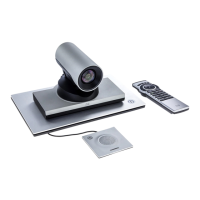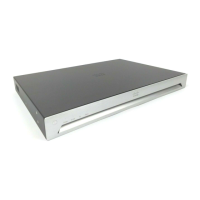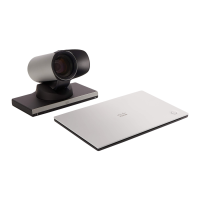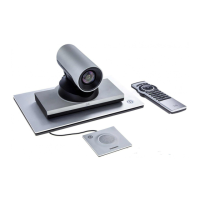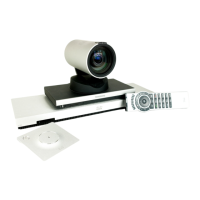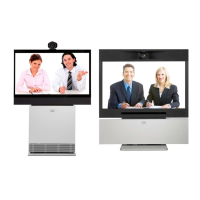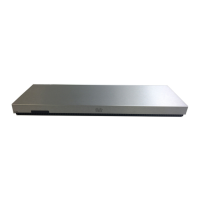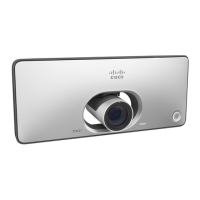
Do you have a question about the Cisco TelePresence SX10 and is the answer not in the manual?
| Digital zoom | 2 x |
|---|---|
| Optical zoom | 2.65 x |
| Supported video modes | 1080p, 720p |
| Video formats supported | H.263, H.264, MPEG4 |
| Supported graphics resolutions | 176 x 144, 352 x 288, 704 x 576, 1024 x 576 (WSVGA), 1024 x 768 (XGA), 1280 x 720 (HD 720), 1920 x 1080 (HD 1080), 640 x 480 (VGA) |
| Voice codecs | G.711, G.711a, G.722, G.722.1, G.729, G.729A |
| Ethernet LAN (RJ-45) ports | 1 |
| AC input voltage | 100-240 V |
| AC input frequency | 50 - 60 Hz |
| Power consumption (typical) | 12 W |
| Operating temperature (T-T) | 0 - 40 °C |
| Operating relative humidity (H-H) | 10 - 90 % |
| Depth | 91 mm |
|---|---|
| Width | 275 mm |
| Height | 117 mm |
| Weight | 900 g |
Guidance on etiquette, preparation, and environmental factors for effective video conferences.
Advice on managing audio, background distractions, and content sharing presentation.
Steps to initiate a call by selecting contacts from the system's directory.
Explanation of the contacts list structure: Favorites, Recents, and Directory.
Instructions to modify contact details before placing a call, like adding prefixes.
Details the necessity and process of editing contact entries for call success.
Guide on adjusting call bandwidth before initiating a connection.
Defines call rate as bandwidth in kbps and its impact on quality.
How to make calls by directly entering contact information or IP addresses.
Procedure for adding more individuals to an ongoing conference call.
Overview of conference capabilities, participant limits, and initiation.
Steps to remove a participant from an active video conference.
How to accept, decline, or ignore incoming calls and manage multiple calls.
User options when receiving an incoming call and system behavior.
Handling a new incoming call when already in a conference.
Guide through the process of transferring an active call to another party.
Brief description of the call transfer functionality.
How to adjust the video display layout during presentations.
Layout changes are personal and depend on content sharing.
How to activate Do Not Disturb mode to reject incoming calls.
Explains Do Not Disturb mode and its default timeout.
Guides on activating the system's standby mode to save power.
Describes standby mode and its effect on call reception.
How to set up call forwarding to voicemail or a specified receiver.
Defines call forwarding and its available options.
Steps to enable the feature for wireless content sharing and control.
Describes the Intelligent Proximity feature and its requirements.
Guides on sharing PC content and stopping a presentation.
Explains sharing PC content during calls, including via Proximity.
How to alter screen layout during presentations for optimal viewing.
Explains available layout options for presentations, such as PiP.
Instructions on how to join scheduled video meetings integrated with the system.
Explains how scheduled meetings appear and how to join.
Steps to add contacts to the Favorites list from the directory.
Describes corporate directory, recent calls, and personal favorites.
How to add participants from an active call to the Favorites list.
Explains what Favorites are and how entries are added.
Guides on adjusting local camera pan, zoom, tilt, and self-view.
Explains camera settings for zoom, pan, tilt, and self-view.
How to control the camera of a remote participant during a call.
Explains the possibility of controlling remote cameras.
Instructions on how to reposition the Picture-in-Picture self-view image.
Explains reasons for moving the self-view image, e.g., blocking screen areas.
Guides on how to navigate to and open the system settings menu.
Describes system information page and access to setup/restart.
